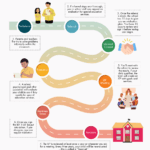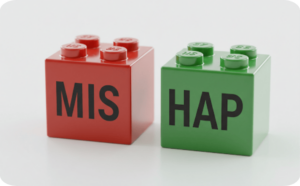No products in the cart.

Structured instruction provides a vital foundation for students with learning differences. Programs rooted in research—like Orton-Gillingham or sequenced math curricula—are designed to build skills systematically. But within that structure, even small opportunities for student choice can lead to more engaged, motivated, and confident learners.
Choice doesn’t mean chaos. In fact, offering carefully designed options within a clear instructional framework empowers students to take greater ownership of their learning.
Best Practices for Integrating Student Choice
1. Loosen the Edges Without Losing Structure
Even the most structured lessons can include small decisions. Students might choose:
- Which words to practice in phonics drills
- Whether to use speech-to-text or write by hand
- Which of two similar tasks to complete first
These options don’t dilute the teaching; they create space for autonomy.
2. Frame Learning Through Interests
Student passions can be powerful entry points to academic goals. When a student I was supporting needed help with grammar, I used his love for Mad Libs to teach parts of speech. What could’ve been a dry concept became memorable and fun—and the learning stuck.
We’re not talking about abandoning structure. We’re talking about embedding structure in contexts students care about.
3. Use Low-Stakes Choice to Build Confidence
Small choices build momentum. Let students select the order of tasks, decide how to demonstrate their understanding, or pick which examples to work through. These micro-decisions create buy-in and give students a sense of agency, especially important for learners who often feel “done to” in school.
4. Develop Flexible Activity Formats
Reusable, interest-driven formats allow you to personalize content efficiently. I once built a “Paleontologist Quest” math game for a student obsessed with dinosaurs. It became a scaffold I could easily adapt to other interests and skill levels. The math didn’t change—but the student’s attitude did.
5. Make Room for Student Input
Some structured programs include flexible components. In one Orton-Gillingham Reading based activity, I used, a “5-minute” block was set aside for student-driven practice. I often extended this time to co-plan with students or work on emerging needs. These check-ins created valuable space for collaboration—and strengthened the relationship as well as the learning.
Why This Works
When students are invited to make choices, they become more than participants—they become partners in the learning process. This sense of agency fosters motivation, persistence, and greater emotional investment.
Importantly, choice doesn’t have to mean overhauling your instruction. It’s about strategic flexibility—offering options that respect both the student’s interests and the integrity of the curriculum.
At Strategies for Learning, we believe structure and creativity go hand in hand. By weaving in small, intentional opportunities for student choice, we unlock deeper engagement—and help students become more active, empowered learners! Contact us to learn more how we can support your child.
Written by BJ McIntyre, Director of Education







No comment yet, add your voice below!